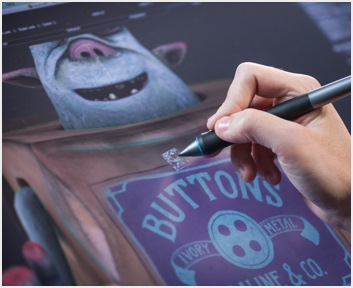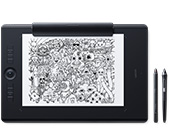Wacom Movink 13: the first-ever Wacom device with an OLED display
We embarked on the project of developing the Wacom Movink 13 with the intention of delivering the best pen experience to professional creatives. The use of an OLED display was on our minds right from the very early planning stages. This technology is key to a thin, lightweight display, and was indispensable for turning our concept into reality – the product you can take with you anywhere and use to draw with whenever you want. On the other hand, the use of OLEDs led to unexpected interference with the EMR (electromagnetic resonance) technology, Wacom's patented digital device technology.
Wacom's patented EMR technology consists of a layer of hardened glass and a sensor layer that sits behind the device’s LCD screen. The sensors are precisely embedded and arranged in an alternating vertical/horizontal grid pattern and emit weak electromagnetic signals. Together, these signals create a magnetic field having a radius extending about 5 mm above the glass surface of the device. The beauty of EMR is that power can be supplied to a pen through LCD displays and protective surfaces without the need for any external power sources. This means there are no batteries to wear out, or power cables to twist and break. This technology, combined with Wacom’s renowned quality and reliability, results in the industry's best accuracy and durability. With all of these benefits, EMR is one of the core technologies that supports Wacom digital devices today.




































